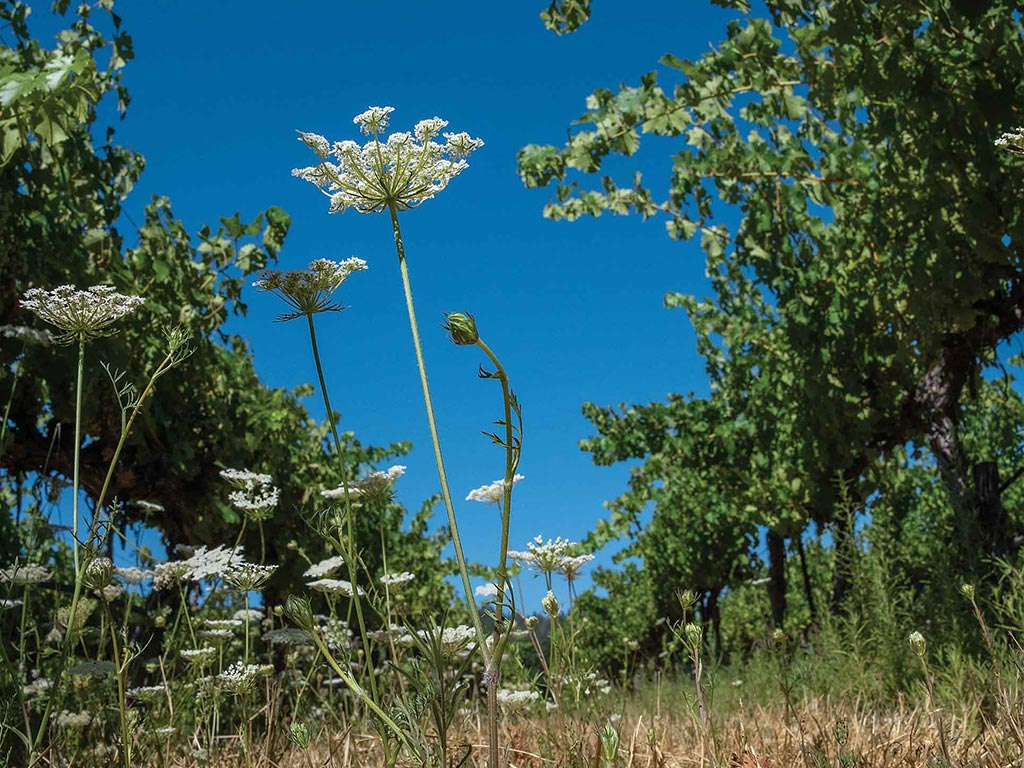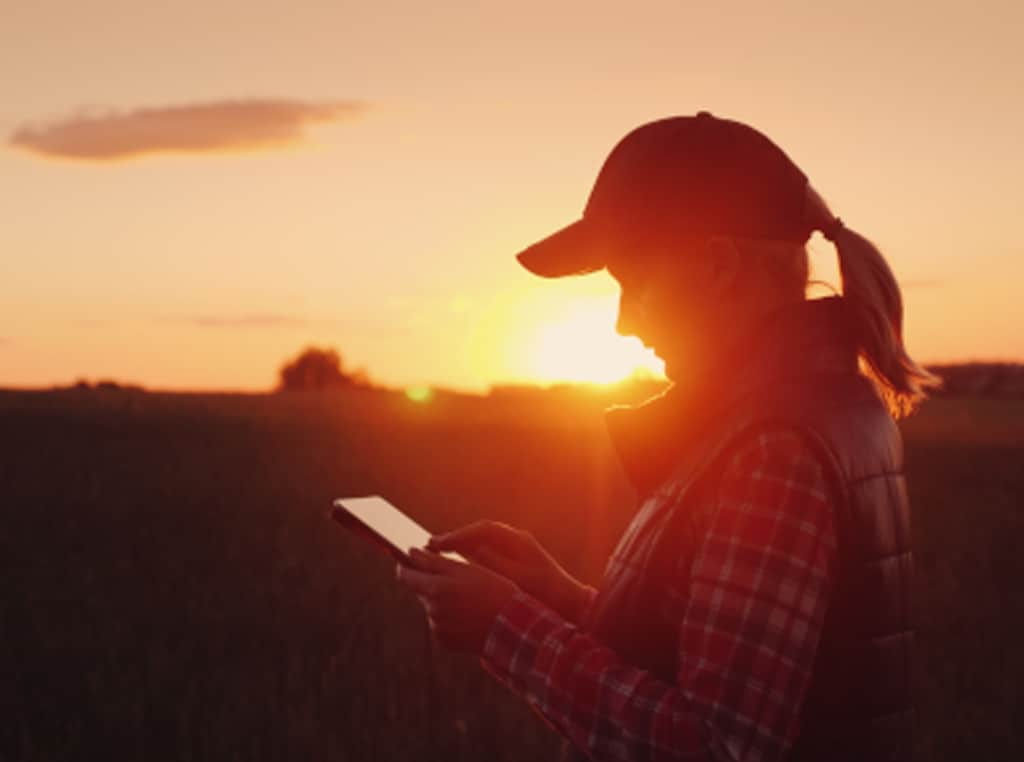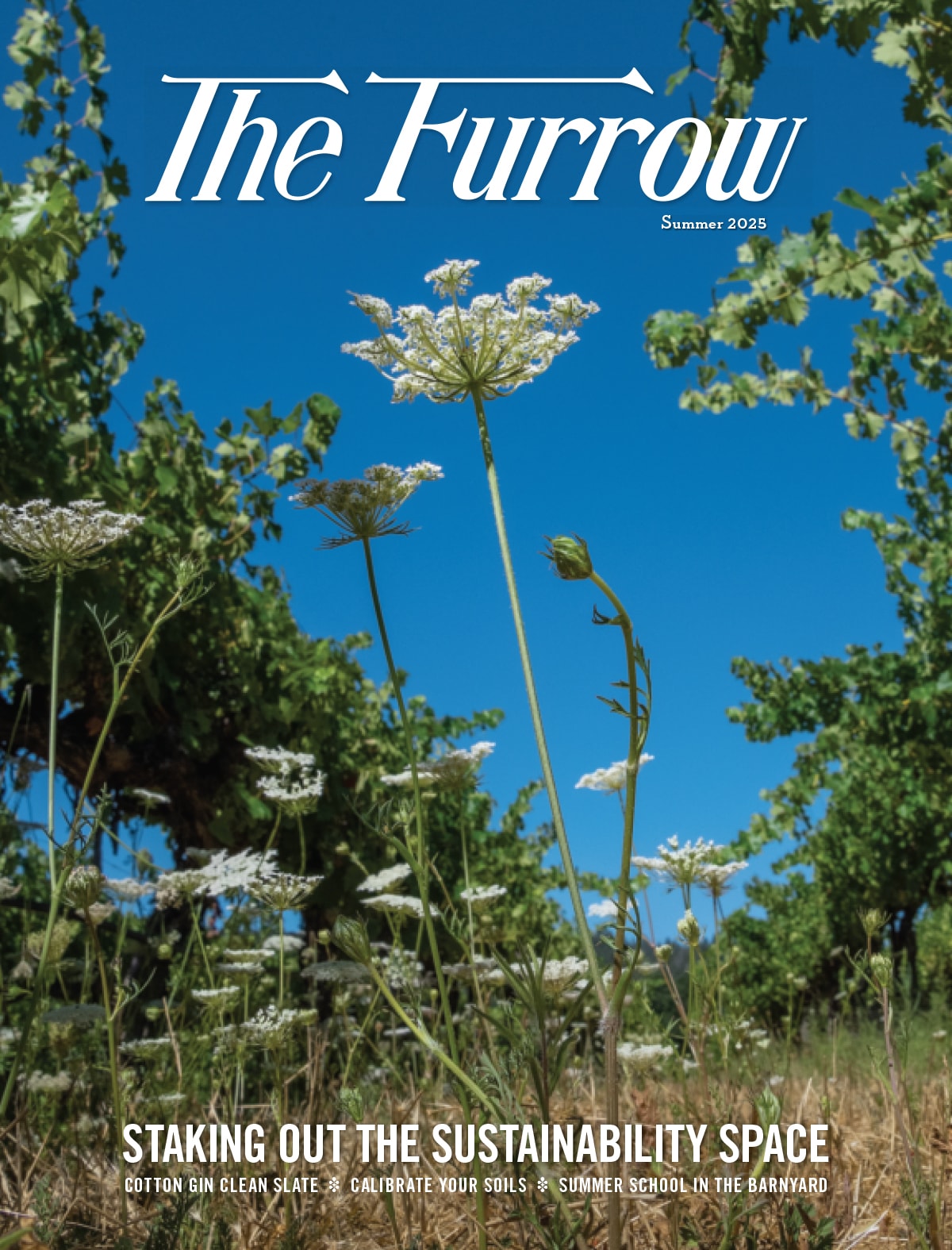Issue: Summer 2025

Agriculture, Sustainability
Staking Out the Sustainability Space
"We are good stewards of the land, and we want to be able to tell that story," says grower and winery owner Bret Munselle of Geyserville, California, chair of Sonoma County Winegrowers (SCW). "And Sonoma County really put a stake in the ground and has thrived from that stake being in the ground."

AGRICULTURE, FARM OPERATION
Hands-on Farming
The Karr family is digging into regenerative practices.

Receive Content from The Furrow by Email
Get notification of new issues sent right to your inbox!

SPECIALTY/NICHE
Color in Numbers
This Iowa couple delights in daylily propagation.

SPECIALTY/NICHE
Sound of Music
Hosting a concert series draws new visitors to orchard.

Agriculture, Specialty/Niche
Big Things Under the Surface at Itty-Bitty Acres
Small farm enlists massive microbe army to nurture crops.

AGRICULTURE, EDUCATION
Breaking the Cold Barrier
Peach varieties push northern boundaries.

AGRICULTURE, EDUCATION
Cotton Gin Clean Slate
Tornado forces choice of rebuild or relinquish.

AGRICULTURE, FARM OPERATION
A Sweet Legacy
Another generation of Hirakatas are primed to produce.

AGRICULTURE, SPECIALTY/NICHE
Small Farm, Bright Blooms
For Andrew McDonald, pots of flowers are the secret to success.

AGRICULTURE, FARM OPERATION
Calculating Your Break-Even Point
Will corn silage make sense for your prairie beef operation?

AGRICULTURE, FARM OPERATION
Calibrate Your Soils
Learn how productive your soils can be.

AGRICULTURE
Horicon Works: Rooted in tradition
The innovation and community spirit of a John Deere factory.

AGRICULTURE, AG TECH
Tech@Work
Harvesting success: The power of teamwork and technology

About The Furrow
The Furrow was first established by John Deere Company in 1895 as "A Journal for the American Farmer." The goal of the magazine remains the same - to tell stories that people enjoy reading and provide them with knowledge that they can apply in their operations.












